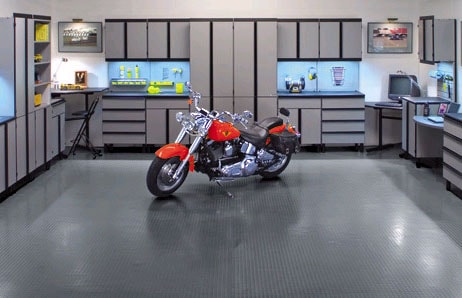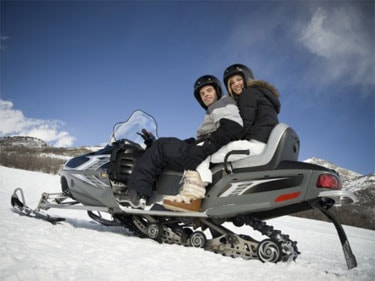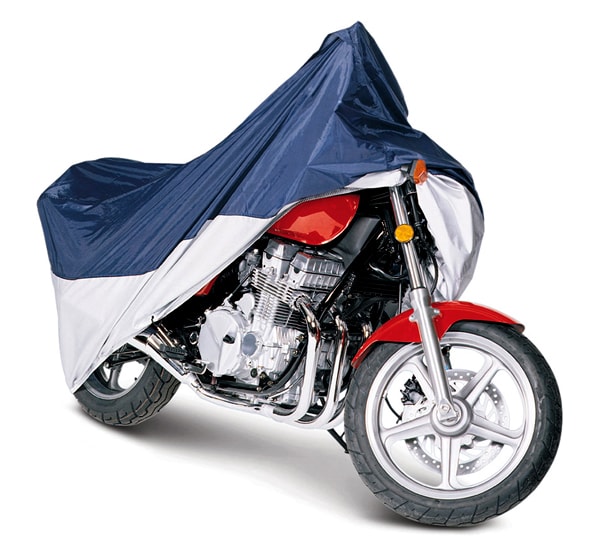For some bikers winter can be quite disturbing, as it prevents them from enjoying the pleasure of two wheels for a couple of months. That's because unless the motorcycle is not snow-modified, they have to put it away and replace it with some other means of transportation that are less satisfactory for the adrenaline junkies out there.
So you get to the point when your a$$ starts to freeze... literally. Nobody likes it, but then again, there’s no need to push your limits... nor your motorcycle’s. Once you decide you’re going to put your beloved motorcycle away for winter, there are some steps you should consider first. Motorcycles are made to run not to stay inactive, so it’s better to get these things done if you want to be back on the road as soon as the white nightmare is over.
Getting Ready for Hibernation
You should first think of the location. Well, your living room is out of the question. You need a place without windows, away from the ultraviolet light. Moreover, if the storage area is in the sunlight it can promote condensation when the sun goes down. We recommend a dry, well-ventilated garage. Once you find a location that fits the aforementioned description, you can start preparing the engine, exhaust and battery for the winter storage.
First, you have to change the engine oil. You’ll need to warm the engine to its normal operating temperature, as it will help you drain the oil faster and more thoroughly. Next step is to fill the tank with fresh fuel, but make sure you don’t overfill. It is recommended to add winterizing fuel conditioner. After you have performed the oil change, restart the engine to recirculate the new oil.
Most importantly, don’t forget to remove the battery for the storage period. However, battery charging should be made at least every two weeks using a charger that has an output of 10% of the battery ampere hour rating, since a higher charge will cause the battery to overheat. If you are able to start and run the bike once a month (in cases when it is not stored indoors), you may want to leave the battery in the bike and just disconnect the negative cable end.
The next step is to wax and polish all painted parts and spray the chrome ones to prevent them from corroding or against rust and moisture. You should also remember to lubricate the chain and service fluids, if necessary, and unload the suspension. Next, check both tires with the air pressure gauge to make sure each tire is properly inflated to the recommended pressure level. The last thing you’ll have to do is cover your motorcycle with a specially designed bike cover, made of slightly porous material that allows it to breath and protects it from moisture.
Meanwhile, once you have your bike stored for winter, you could use the spare time to take care of your protective gear and to enjoy some fun winter activities, such as practicing your snowmobile skills.
The first logical step is to remove the cover and reinstall the battery. Then, recheck all fluid levels and turn on the engine. Though you made sure it was kept safe, you should still check for cracked tires or leaking oil. Set the tire pressures back to riding specs and your motorcycle is ready for a new season.
On the other hand, you might be a bit rusty and your riding skills could also need to be refreshed. Due to the sand or salt deposits on the edge of the road, try and ride extra carefully until you’re up to speed.
Ride safely!
First, you have to change the engine oil. You’ll need to warm the engine to its normal operating temperature, as it will help you drain the oil faster and more thoroughly. Next step is to fill the tank with fresh fuel, but make sure you don’t overfill. It is recommended to add winterizing fuel conditioner. After you have performed the oil change, restart the engine to recirculate the new oil.
Most importantly, don’t forget to remove the battery for the storage period. However, battery charging should be made at least every two weeks using a charger that has an output of 10% of the battery ampere hour rating, since a higher charge will cause the battery to overheat. If you are able to start and run the bike once a month (in cases when it is not stored indoors), you may want to leave the battery in the bike and just disconnect the negative cable end.
The next step is to wax and polish all painted parts and spray the chrome ones to prevent them from corroding or against rust and moisture. You should also remember to lubricate the chain and service fluids, if necessary, and unload the suspension. Next, check both tires with the air pressure gauge to make sure each tire is properly inflated to the recommended pressure level. The last thing you’ll have to do is cover your motorcycle with a specially designed bike cover, made of slightly porous material that allows it to breath and protects it from moisture.
Meanwhile, once you have your bike stored for winter, you could use the spare time to take care of your protective gear and to enjoy some fun winter activities, such as practicing your snowmobile skills.
The Wake Up Call
The first warm day of spring comes so this means the winter nap is over for your motorcycle. Well, if you followed the instructions we gave you it means you won't have too much trouble getting back on the road as fast as possible.The first logical step is to remove the cover and reinstall the battery. Then, recheck all fluid levels and turn on the engine. Though you made sure it was kept safe, you should still check for cracked tires or leaking oil. Set the tire pressures back to riding specs and your motorcycle is ready for a new season.
On the other hand, you might be a bit rusty and your riding skills could also need to be refreshed. Due to the sand or salt deposits on the edge of the road, try and ride extra carefully until you’re up to speed.
Ride safely!



